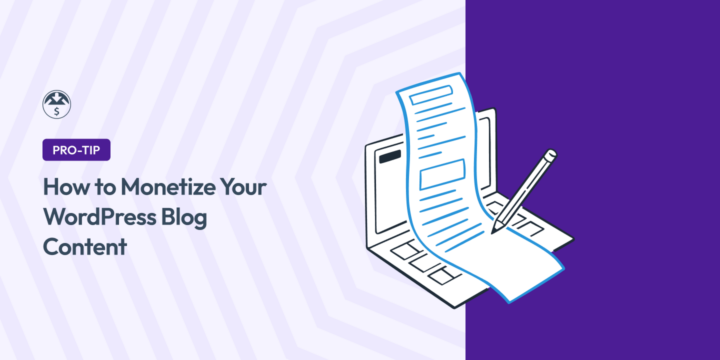
Do you want to learn how to easily monetize your WordPress blog?
Transforming your blog from a creative outlet or secondary thought into an active or passive income stream is an excellent way to build engagement and sustainable growth.
Whether you currently run an online store, are a seasoned business owner, or are a new blogger looking for a lucrative side gig, there are many benefits to monetizing a WordPress blog.
🔎 In this article, I’ll cover:
- What Is Monetized Content?
- Why Monetize Your WordPress Blog?
- How to Monetize Your WordPress Blog
- 1. Know Your Niche
- 2. Invest in the Right eCommerce Solutions
- 3. Start Small With Freebies & Lead Magnets
- 4. Utilize Conversion & Optimization Tools
- 5. Sell Exclusive Membership Content
- 6. Display Ads on Your WordPress Blog
- 7. Use Affiliate Marketing
- 8. Explore Brand Partnerships & Sponsorships
- 9. Assess Analytics & Adjust Accordingly
- FAQs on How to Monetize Your WordPress Blog
What Is Monetized Content?
Monetized content is a popular way of turning your expertise and insights into income streams. It’s valuable information, actionable strategies, or captivating stories packaged with a price tag.
Typically, monetized content refers to any digital material (text, images, videos, audio, etc.) that’s been created to generate revenue for the creator.
This includes blogs, eBooks, online courses, podcasts, memberships – anything that offers your readers value while putting some money in your pocket.
The most common tactics available to monetize your WordPress blog can be broken down into two categories: direct and indirect.
Some examples of direct monetization strategies include:
- Subscriptions (exclusive content, early access, newsletters)
- Digital products (eBooks, templates, printables, or other digital assets)
- Coaching or consulting services in an area of expertise
- Pay-per-view content (in-depth tutorials, articles, webinars, etc.)
Examples of indirect monetization strategies include:
- Display ads through platforms like Google AdSense or directly selling ad space to brands
- Affiliate marketing
- Sponsored content (sponsored posts or webinars)
By offering content worth paying for, you build a loyal following, reward engaged readers, and create an extra income stream for your blogging endeavors.
Why Monetize Your WordPress Blog?
Beyond the obvious financial perks, monetization unlocks Pandora’s box of benefits for your WordPress blog. Let’s take a quick look at some of the biggest ones.
- Audience value: Premium content incentivizes deeper engagement and fosters a sense of community around your expertise and know-how. Readers perceive your hard work as valuable and are more likely to invest time and resources in it.
- Sustainable growth: A healthy income stream fuels reinvestment in your blog. You can upgrade technology, improve design, and create higher-quality content, attracting even more readers and solidifying your online presence.
- Creative freedom: Monetization removes the pressure to please everyone. Confidently explore niche topics, delve deeper into complex subjects, and cater to a specific audience, knowing your efforts are financially supported.
- Credibility & expertise: When WordPress users pay for your content, they invest not just in the information but also in your knowledge and authority. This strengthens your brand and positions you as a trusted expert in your field.
WordPress isn’t just a blogging platform; it’s a monetization powerhouse. The vast ecosystem of WordPress themes, plugins, and integrations empowers you to implement diverse income streams with ease.
Whether you’re a tech-savvy developer or a beginner blogger, WordPress has the tools and resources to turn your content into cash.
How to Monetize Your WordPress Blog
Ready to unlock your blog’s monetization potential? Below are some key tips, tools, and best practices to use to monetize your WordPress blog.
1. Know Your Niche
Before building your monetization strategy, it’s important to lay the foundation. This involves researching to thoroughly understand your audience, their interests, and their pain points. This focus helps you target your content and choose the right monetization tactics.
Explore various eCommerce niches to generate some ideas for areas you could fill with premium content. See what other bloggers, marketers, and publishers are doing in your market to earn money through their websites.
Focus on a specific niche and build a loyal following among people who are interested in your topic.
2. Invest in the Right eCommerce Solutions
WordPress eCommerce plugins are your monetization allies. The best WordPress plugins to use depend on a few factors, like the type of goods you’re selling.
Easy Digital Downloads (EDD) is the all-in-one solution for selling digital products and downloads:

Its user-friendly interface, robust features, and seamless integration with WordPress make EDD a dream for content creators.
Use it to create and manage discount codes, reduce shopping cart abandonment, and integrate with payment gateways like Stripe and PayPal.
In addition to selling individual digital downloads, you can use it to package bundled products or sell subscriptions and accept recurring payments.
If you don’t have a WordPress eCommerce site set up yet and still need web hosting, I recommend SiteGround’s Managed EDD WordPress hosting plans:
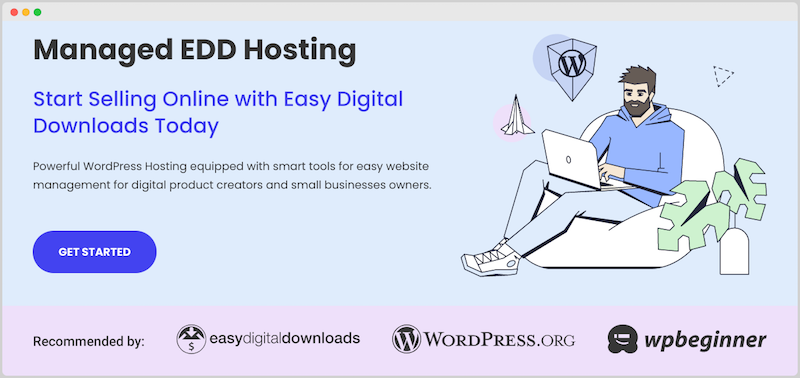
You get everything you need to start an online store in minutes, including a free SSL certificate, the EDD plugin, WordPress themes for a positive user experience, and conversion and optimization tools.
For those selling physical products, WooCommerce is another go-to eCommerce plugin. Transform your blog into an eCommerce store, selling merchandise, branded products, or handcrafted creations.
3. Start Small With Freebies & Lead Magnets
Once you have your niche and online selling solution established, it’s important to choose the right monetization methods that align with your content, audience, and goals.
Start small.
While monetization is key, building a strong email list shouldn’t be neglected. Offer valuable freebies like cheat sheets, downloadable guides, or exclusive sneak peeks in exchange for email addresses.
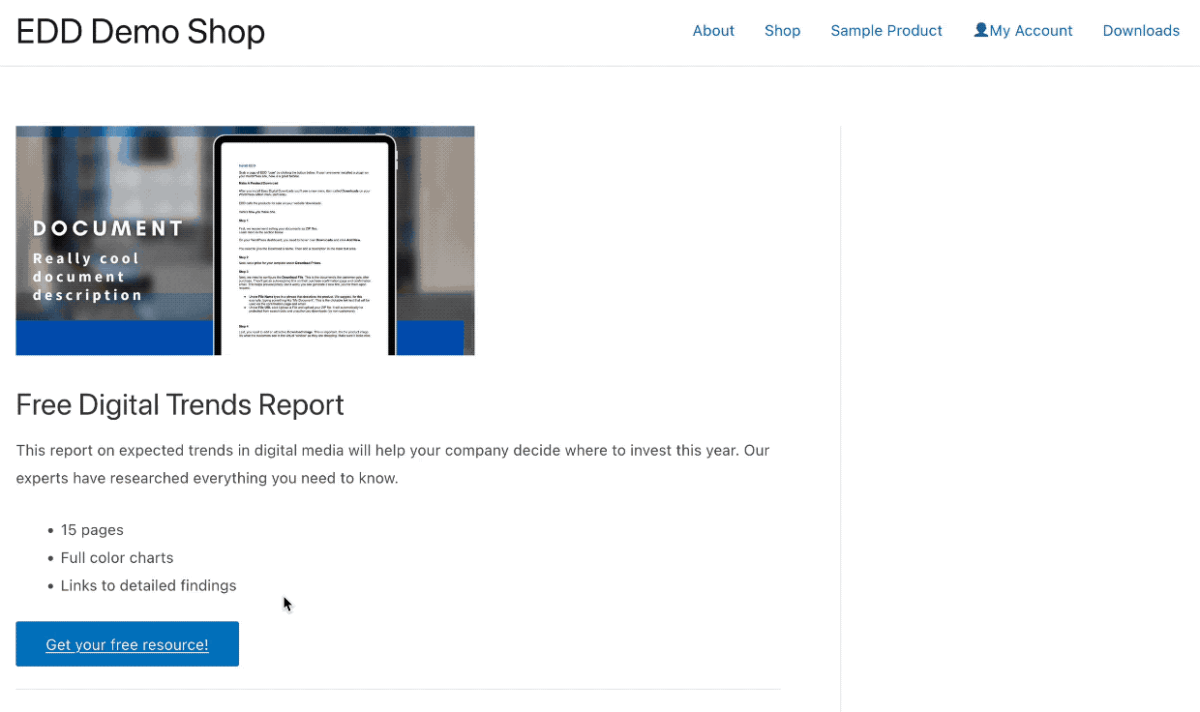
If you’re using EDD, the Free Downloads extension is an excellent tool for offering freebies and lead magnets on your WordPress blog.
This not only grows your audience but also creates a nurturing environment for future monetization efforts to promote paid content.
4. Utilize Conversion & Optimization Tools
In addition to your eCommerce solution, there are a handful of key WordPress plugins to consider adding to your site. Certain tools help drive traffic to your blog through organic search, social media, email marketing, and other channels.
AIOSEO is a leading Search Engine Optimization (SEO) plugin for WordPress to optimize your content for search engines:
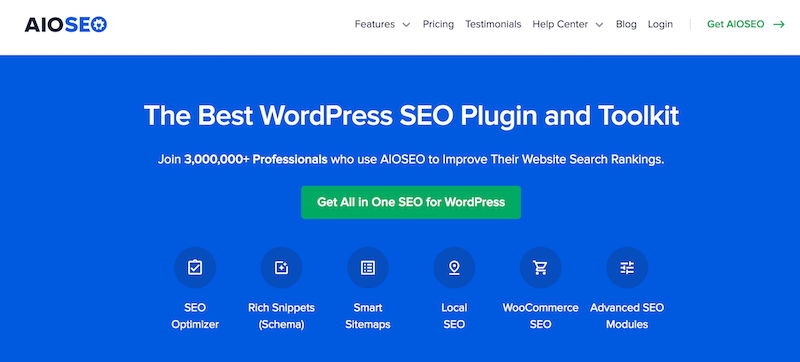
Another robust toolkit I highly recommend for lead generation is OptinMonster:
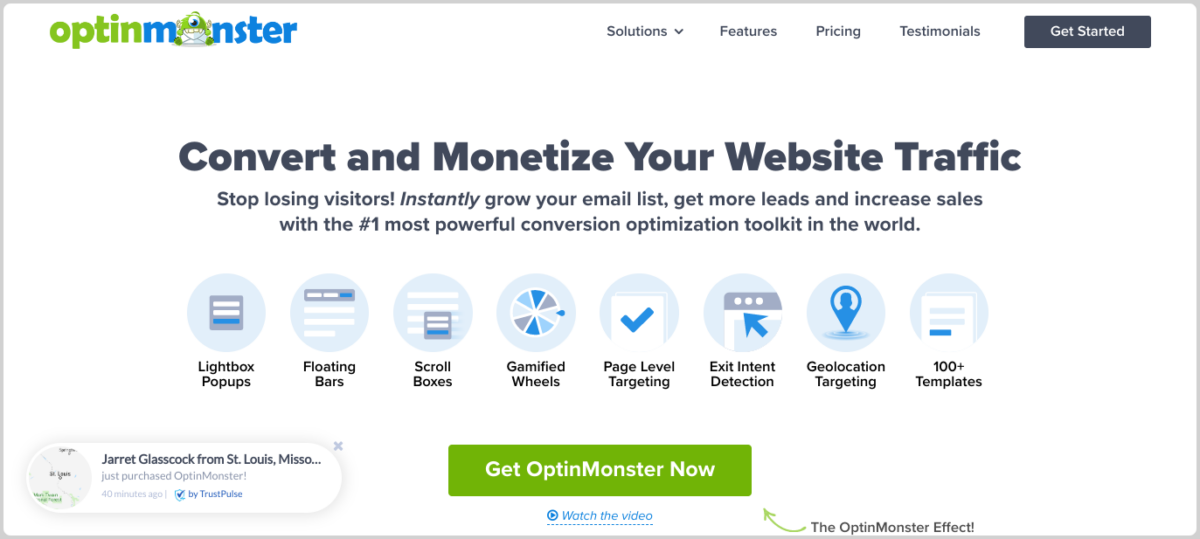
Use it to easily create exit-intent pop-ups and other opt-ins on your site to collect visitor information, run targeted campaigns and social offers, and promote your products.
Social media plugins like Smash Balloon help integrate your WordPress blog with social media platforms to display your feed and help promote your content and products across other social channels:
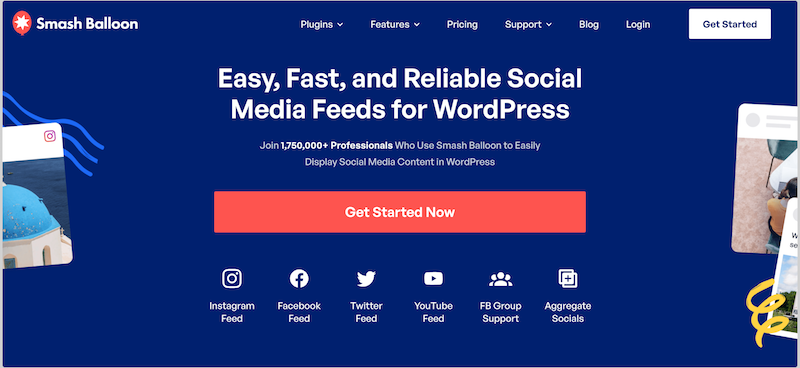
Utilize email marketing platforms like Mailchimp or ConvertKit to manage your subscriber list and send targeted email campaigns promoting your paid products, services, and content. Offer regular value through insightful newsletters, behind-the-scenes updates, and early access to new content.
5. Sell Exclusive Membership Content
One of the most popular and effective ways to monetize your WordPress blog is to create a membership site to sell exclusive content.
This could include:
- Early access to new material
- Tiered membership options with varying levels of access
- Exclusive downloadable resources like templates and checklists
- In-depth discussions through paid subscriptions
Share your knowledge in a comprehensive format, earning revenue while adding significant value to your audience. This incentivizes returning visitors and builds a dedicated community willing to invest in your expertise.
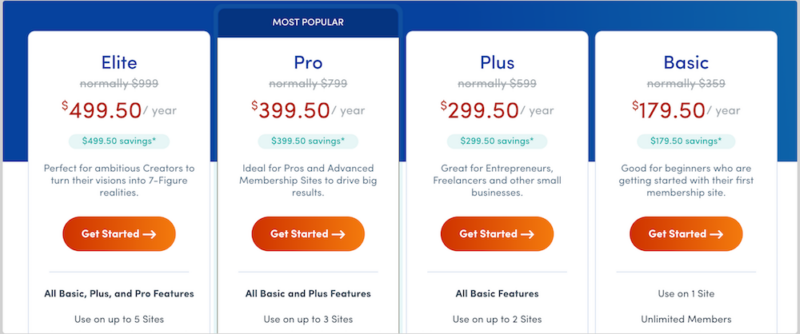
When creating and selling membership content, remember that people can smell a sales pitch from a mile away. Aim to provide high-quality, informative content that solves problems and builds trust. Then subtly weave in relevant monetization options.
There are a handful of WordPress membership plugins to sell exclusive content. For instance, EDD offers add-ons for All Access, Restrict Content Pro, and Content Restriction to put content behind a paywall.
MemberPress is another great option if you want to turn your blog’s content into a structured learning experience or Learning Management System (LMS) by creating online courses or workshops.
6. Display Ads on Your WordPress Blog
If your budget allows, another way to monetize your WordPress blog is through advertising. While you shouldn’t be afraid of paid ads, it’s essential to be smart about them.
Opt for targeted ad networks like Google AdSense that display relevant ads to your readers, enhancing their experience while generating revenue for you.
As you get more comfortable, you could also experiment with ad space and placements, testing different sizes and locations to find the sweet spot that maximizes views without intruding on reader experience.
Partner with brands within your niche for sponsored ad spots, offering targeted exposure for their products or services. I’ll touch on that more in a moment.
7. Use Affiliate Marketing
An increasingly popular method of monetization is affiliate marketing. If you’re unfamiliar, this strategy involves promoting a company’s products or services in exchange for commission payouts on each successful sale made through your unique referral link.
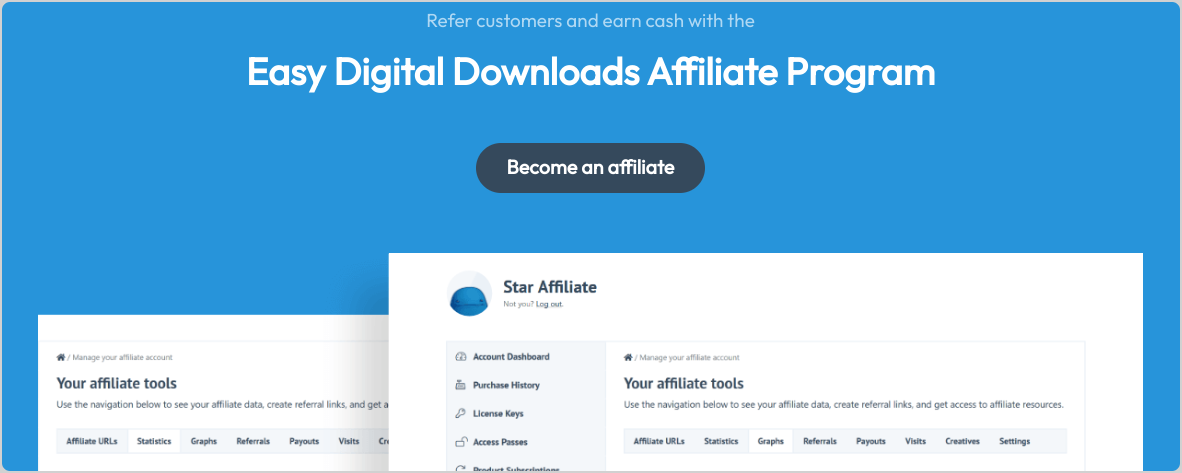
For instance, if you’re part of the Amazon affiliate program, Amazon Associates, you can use your WordPress blog to recommend products and services related to your blog’s focus through affiliate links.
Choose affiliate programs relevant to your content and niche. Promote affiliate products subtly within your content, integrating them into blog posts, reviews, and tutorials. Create dedicated resource pages showcasing your favorite tools and services.
If you already have a small business and want to start your own affiliate marketing program to reach other successful bloggers interested in promoting your products, use a plugin like AffiliateWP or ThirstyAffiliates:
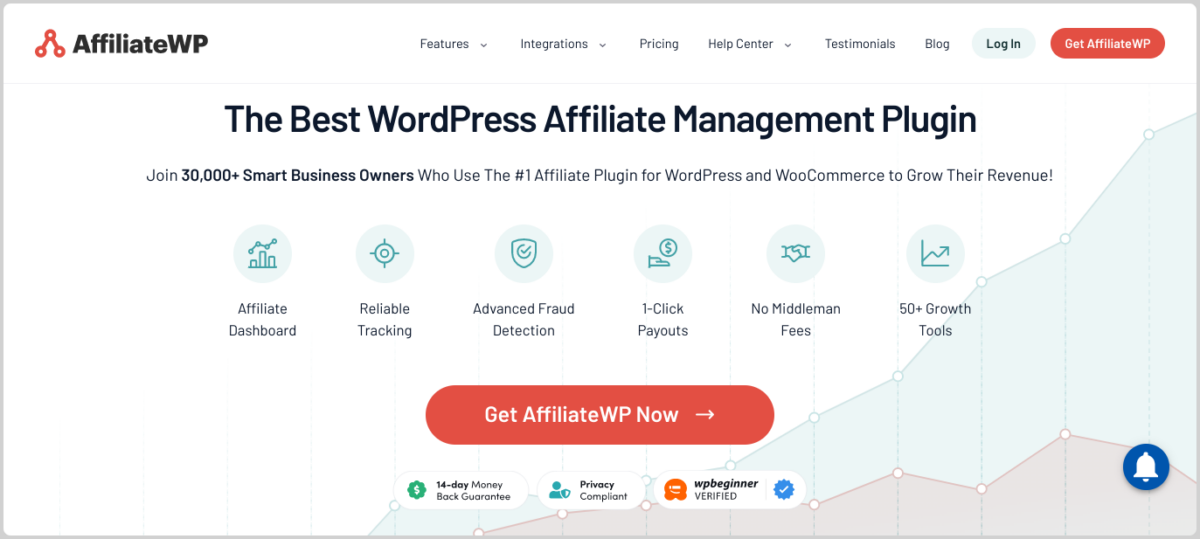
These tools can help you manage your affiliate links efficiently and track their performance.
8. Explore Brand Partnerships & Sponsorships
Partnerships with relevant brands and creating sponsored content can be a powerful and lucrative way to monetize your WordPress blog.
Consider accepting sponsored posts and sponsored content from influencers, freelancers, or brands with the same area of expertise. You could also host sponsored webinars or create other forms of content that incorporate their products or messages.
In addition to expanding your reach, sponsored content can also help improve your SEO. Backlinks from brand websites can boost your WordPress blog’s search engine ranking.
Be sure to partner with brands whose products or services genuinely resonate with your blog’s niche and audience. Avoid inauthentic endorsements that alienate readers.
For instance, as a travel blogger, you could monetize a travel blog by partnering with suitcase brands or rental websites.
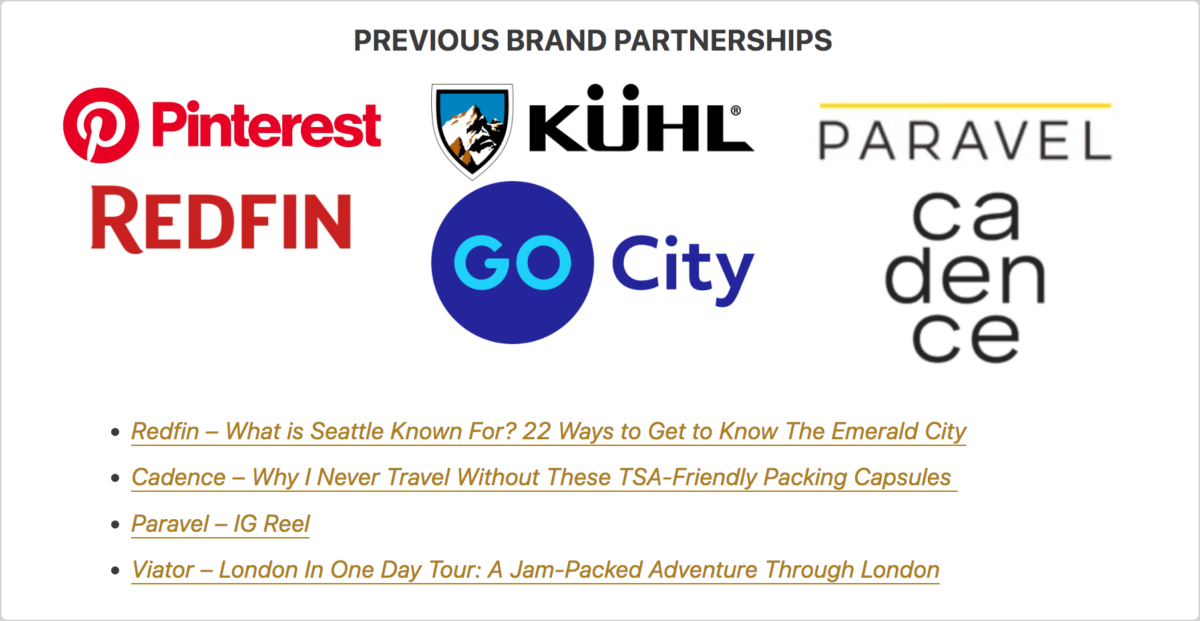
Don’t just promote products though. Create informative and engaging sponsored content that adds value to your readers’ lives. As with affiliate marketing and exclusive content, this could be product reviews and tutorials, product comparisons, or case studies.
Blend sponsored content with your regular content naturally, maintaining your own voice and style.
Also, be transparent and disclose sponsored content using labels like “Sponsored” or “Paid Partnership.” Transparency builds trust with readers and complies with FTC regulations.
9. Assess Analytics & Adjust Accordingly
Figuring out the best strategy to make money blogging won’t happen overnight.
Successful monetization takes time and effort. Focus on creating great content, building a dedicated audience, and experimenting with different monetization strategies to find the right mix for your blog.
In addition to EDD’s built-in reporting tools, use a plugin like MonsterInsights to integrate Google Analytics with WordPress and gain valuable insights into your audience demographics, traffic sources, and content performance:
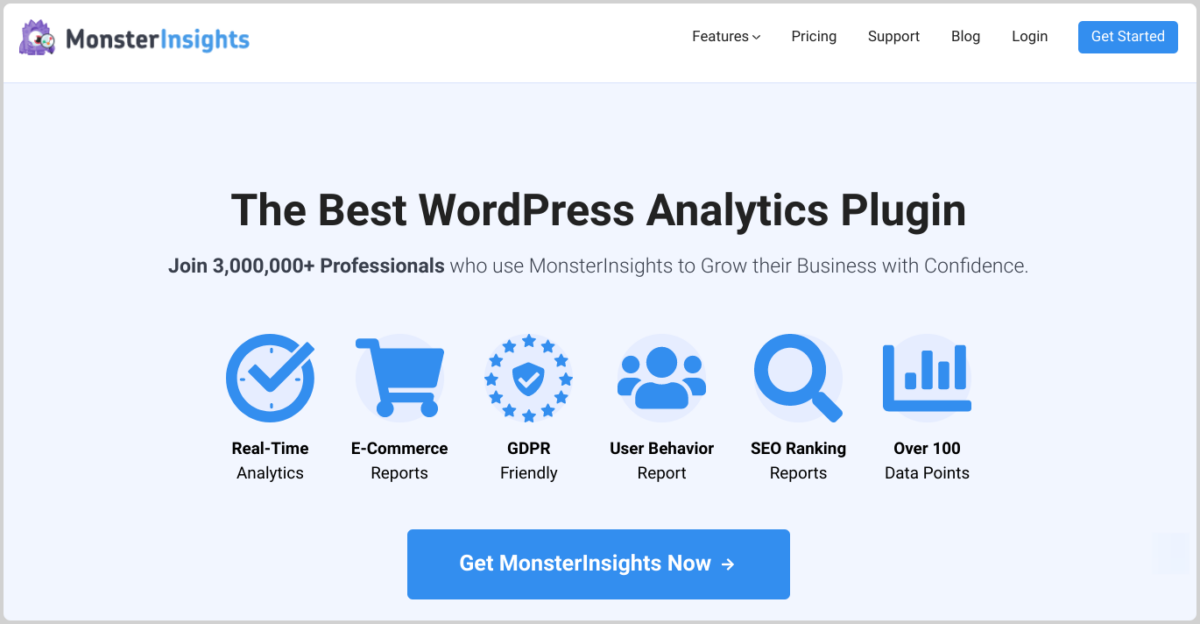
Use this data to refine your monetization strategies and optimize your content for maximum impact.
Try different monetization methods and track your results. See what resonates with your audience and adjust your strategy accordingly.
FAQs on How to Monetize Your WordPress Blog
Let’s wrap up with some frequently asked questions.
How much can I actually earn by monetizing my blog?
Unfortunately, there’s no one-size-fits-all answer to how much you can earn by monetizing your WordPress blog. The potential income varies greatly depending on several factors, including your niche, content quality, and monetization strategy. Building a successful monetized blog takes time and trial and error. Be patient, consistent, and put your readers first.
How do I know if my blog is big enough to monetize?
There’s no magic number for a blog to be “ready” for monetization. Even a small, engaged audience can be valuable to the right brands or products. Start small with one or two monetization strategies and test what resonates with your readers.
Will monetizing my blog hurt its authenticity?
Done right, monetization can enhance your blog’s authenticity. When you offer valuable content worth paying for, it demonstrates your expertise and strengthens your connection with your audience. Just be transparent about your monetization efforts and prioritize providing value first.
Monetize Your WordPress Blog With EDD
Successful monetization starts with high-quality content that provides genuine value to your audience. Choose strategies that align with your blog’s focus and your readers’ interests. Most importantly, don’t be afraid to experiment with different methods and adjust your approach when necessary.
Don’t have a digital selling solution on your WordPress site yet? Get Easy Digital Downloads to add eCommerce features to monetize your WordPress blog in minutes:
What’s next? Learn how to grow and scale your eCommerce business.
📣 P.S. Be sure to subscribe to our newsletter and follow us on Facebook or Twitter for more WordPress resources!
Using WordPress and want to get Easy Digital Downloads for free?
Enter the URL to your WordPress website to install.
Disclosure: Our content is reader-supported. This means if you click on some of our links, then we may earn a commission. We only recommend products that we believe will add value to our readers.
One comment
Comments are closed.
The rewards and loyalty points program is an excellent motivation to continue shopping.